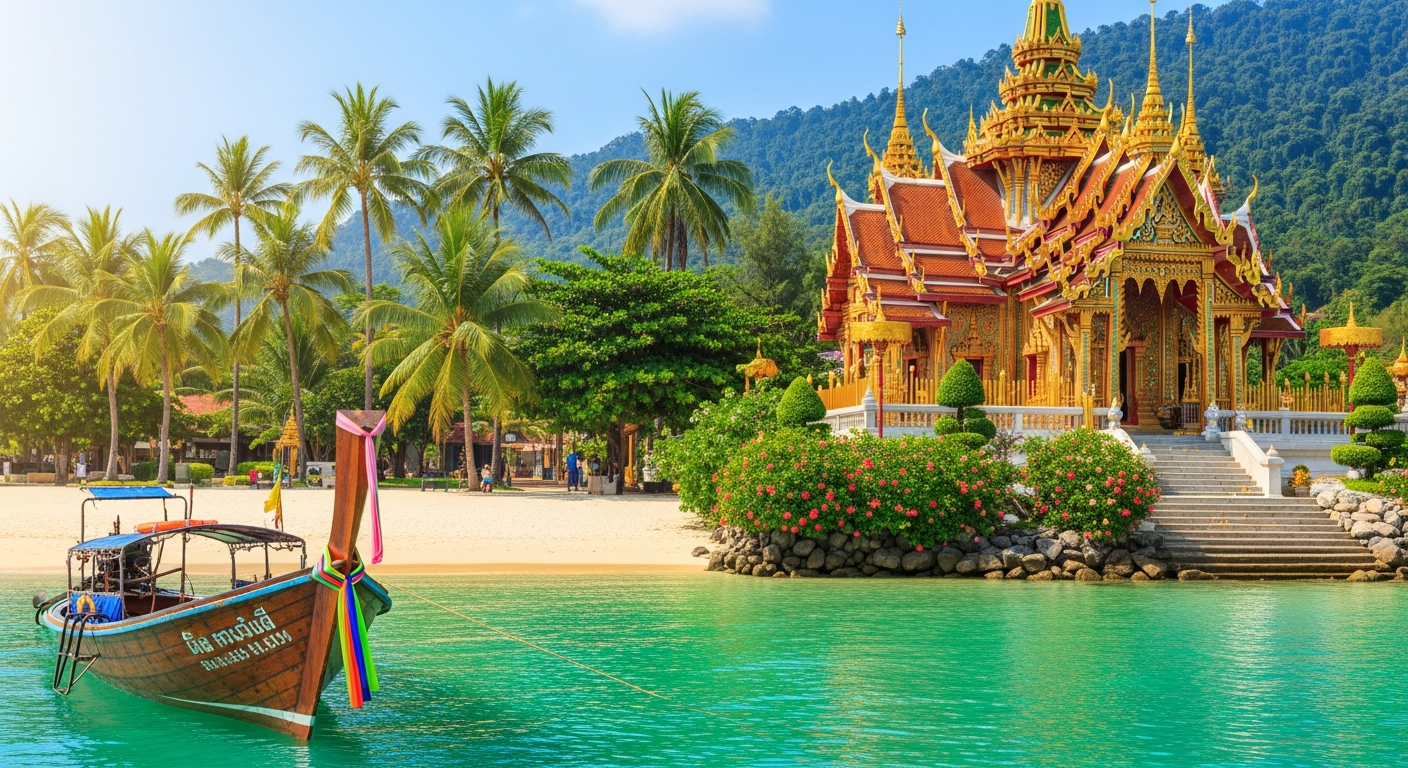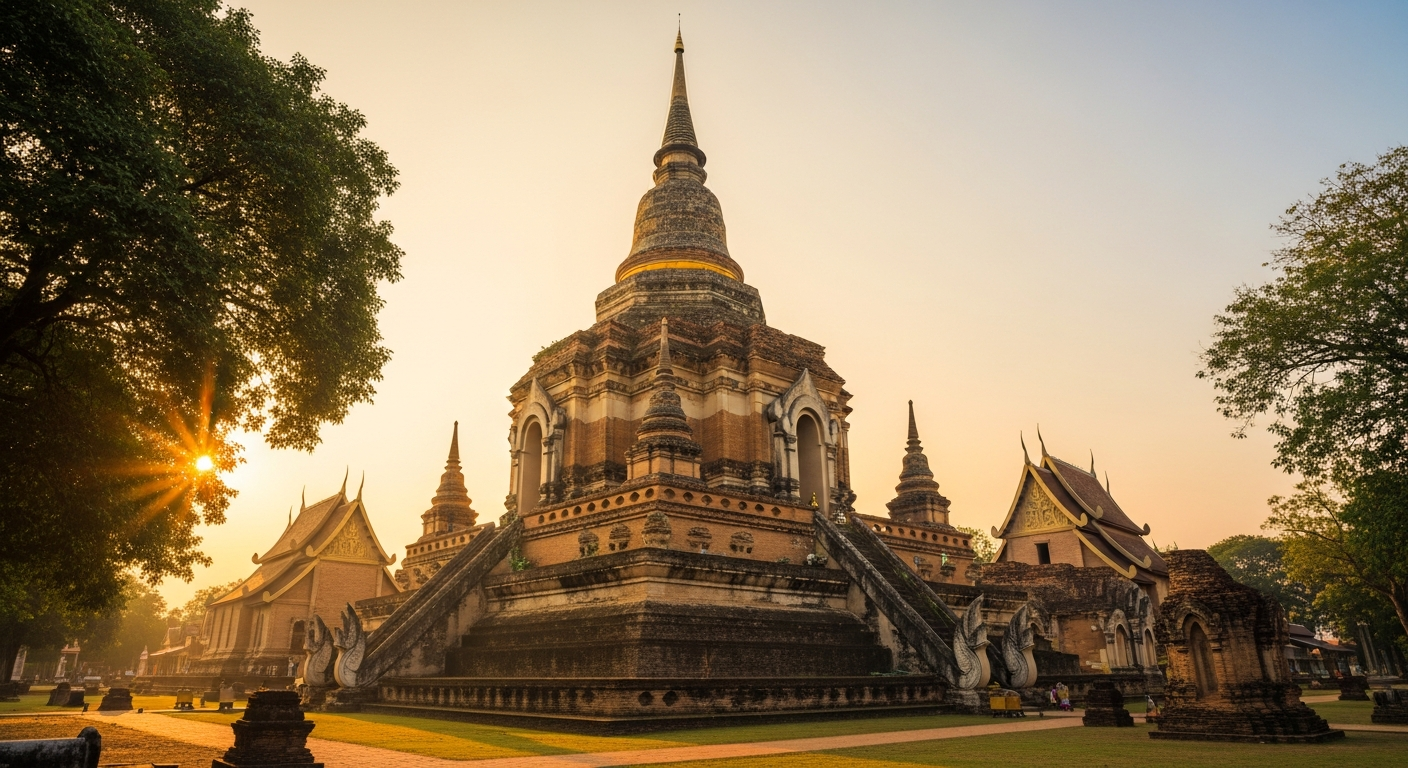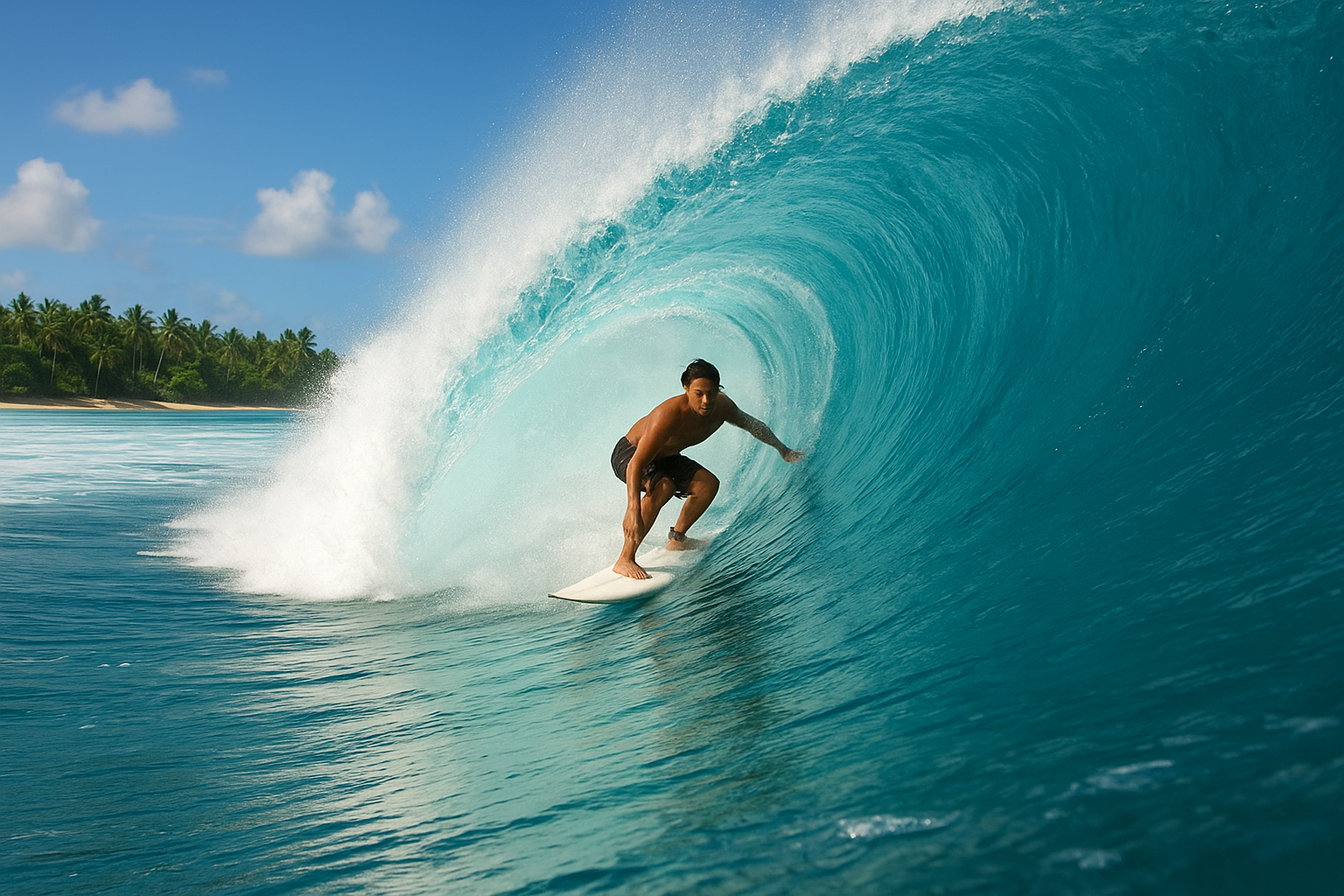Thailand offers an incredible mix of vibrant cities, serene temples, lush jungles, and stunning beaches. For first-time visitors, planning a trip can feel overwhelming. This ultimate two-week itinerary balances iconic sights with relaxing downtime. It guides you through the country’s highlights, ensuring a memorable and seamless adventure. Prepare to explore ancient ruins, savor delicious street food, and unwind on pristine shores.

Part 1: The Electric Energy of Bangkok (Days 1-4)
Your journey begins in Thailand’s bustling capital, Bangkok. This city is a whirlwind of sights, sounds, and smells. It perfectly blends ancient tradition with modern energy. You will spend the first four days exploring grand temples, navigating lively markets, and indulging in world-famous cuisine.
Day 1: Arrival and First Impressions
Arrive at Suvarnabhumi Airport (BKK) and take a taxi or the Airport Rail Link to your hotel. We recommend staying near the Sukhumvit or Silom areas for easy access to transport and food. After settling in, your first adventure is a street food tour. Join a guided tour or simply wander through a local market like the one on Yaowarat Road in Chinatown. This is the best way to dive headfirst into Thai flavors. Try classics like Pad Thai, mango sticky rice, and savory meat skewers.
Day 2: Temples and River Life
Today is dedicated to Bangkok’s historical heart. Start early at the Grand Palace, a breathtaking complex of ornate buildings. Remember to dress respectfully; this means covering your shoulders and knees. Next, walk to Wat Pho to see the magnificent Reclining Buddha. The statue is an impressive 46 meters long. Afterward, take a short ferry ride across the Chao Phraya River to visit Wat Arun, the Temple of Dawn. Its steep, decorated spires offer fantastic city views, especially at sunset. The intricate porcelain details make this temple truly unique.
Day 3: Markets and Canals
Experience a different side of Bangkok by visiting a floating market. Damnoen Saduak is the most famous, though it can be touristy. For a more local feel, consider Amphawa Floating Market, which opens in the afternoon. Here, vendors sell food and goods directly from their long-tail boats. Many tours also include a stop at the Maeklong Railway Market. Sellers here quickly pack up their stalls to let a train pass through multiple times a day. It is a truly unbelievable sight.
Day 4: Shopping and Northbound Travel
If it’s a weekend, spend your morning at the Chatuchak Weekend Market. It is one of the world’s largest outdoor markets, with over 15,000 stalls. You can find everything from clothing to antiques. For a modern shopping experience, explore the massive malls in the Siam area, such as Siam Paragon and CentralWorld. In the evening, head to the airport for a short flight to Chiang Mai. Alternatively, for a more scenic and budget-friendly option, book an overnight sleeper train from Hua Lamphong Station.
Part 2: The Cultural Soul of Chiang Mai (Days 5-8)
Welcome to the Rose of the North! Chiang Mai Travel Guide – Lonely Planet offers a relaxed pace compared to Bangkok. Surrounded by mountains and lush countryside, this city is the cultural capital of Northern Thailand. Here you will explore ancient temples, interact with elephants ethically, and learn the secrets of Thai cooking.

Day 5: Old City Exploration
After arriving and checking into your accommodation, spend the day exploring Chiang Mai’s historic Old City. This area is a square surrounded by a moat and ancient walls. You can easily walk or rent a bicycle to get around. Visit prominent temples like Wat Chedi Luang, an impressive ruined pagoda, and Wat Phra Singh, which houses a revered Buddha image. In the evening, stroll through the Night Bazaar to shop for handicrafts and enjoy a delicious northern Thai dinner.
Day 6: Gentle Giants and Culinary Delights
Today offers a chance to connect with Thailand’s most revered animal. Choose an ethical elephant sanctuary, such as Elephant Nature Park. These sanctuaries rescue elephants from harsh working conditions. You can spend the day feeding, bathing, and walking with them in their natural environment. It is a truly heartwarming experience. In the evening, immerse yourself in Thai cuisine by taking a cooking class. You will visit a local market to pick fresh ingredients and then learn to prepare several classic dishes.
Day 7: Mountain Views and Trendy Cafes
For a spectacular view, take a trip up the winding mountain road to Wat Phra That Doi Suthep. This sacred temple overlooks the city from its mountain perch. The best times to visit are early morning to see the sunrise or late afternoon to avoid crowds. Afterward, explore the trendy Nimmanhaemin Road area. This neighborhood is known for its stylish cafes, boutique shops, and art galleries. It is a great place to relax with a coffee and observe local life.
Day 8: Nature’s Peak and Southbound Travel
On your final day in the north, you have a couple of options. You could take a day trip to Doi Inthanon National Park, home to Thailand’s highest peak. The park features stunning waterfalls, nature trails, and the beautiful Royal Twin Pagodas. Alternatively, enjoy a final leisurely day in Chiang Mai, perhaps getting a traditional Thai massage. Later, head to Chiang Mai International Airport (CNX) for your flight to the south.
Part 3: Island Paradise in the South (Days 9-13)
Now it’s time for sun, sand, and sea. Thailand’s southern region is famous for its limestone karsts and turquoise waters. This itinerary suggests Phuket or Krabi, both excellent bases for island hopping and relaxation. Choose Phuket for more vibrant nightlife and a wider range of activities. Conversely, choose Krabi for a more laid-back, nature-focused vibe.

Day 9: Arrival and Beach Relaxation
Fly into either Phuket (HKT) or Krabi (KBV) and transfer to your hotel. Your main goal today is to unwind. Settle in, find a spot on the beach, and soak up the tropical atmosphere. Whether you’re on Patong Beach in Phuket or Ao Nang Beach in Krabi, the stunning coastal scenery will immediately transport you to paradise. Enjoy a fresh seafood dinner at a beachfront restaurant as you watch the sunset. Island Hopping Tours from Phuket and Krabi – TripAdvisor
Day 10: Iconic Island Hopping
An island-hopping tour is an absolute must-do. From Phuket, the most popular trip is to the Phi Phi Islands. This tour usually includes a stop at Maya Bay, made famous by the movie The Beach. From Krabi, a common choice is the 4 Islands Tour, which takes you to Phra Nang Cave Beach, Tup Island, Chicken Island, and Poda Island. Both tours offer incredible snorkeling, swimming, and photo opportunities. Most tour operators provide lunch and equipment, making for a hassle-free day of exploration.
Day 11: Inland Exploration
Take a break from the sea to explore your island’s inland attractions. In Phuket, you can visit the Big Buddha, a 45-meter-tall statue with panoramic views of the island. You can also explore the charming streets of Phuket Old Town, known for its Sino-Portuguese architecture. In Krabi, a popular activity is climbing the 1,237 steps to the Tiger Cave Temple (Wat Tham Suea) for breathtaking views. Alternatively, you can take a long-tail boat to the stunning Railay Beach, which is only accessible by water.
Day 12: Adventure or Relaxation
Spend your last full day on the island pursuing your interests. Adventure seekers can try sea kayaking through mangrove forests, rock climbing on Railay’s limestone cliffs, or getting a scuba diving certification. If you prefer to relax, simply spend the day at a different beach, get another Thai massage, or lounge by the pool. This is your time to do as much or as little as you want before your journey home.
Day 13: Last-Minute Souvenirs and Farewell Dinner
Use your final day for any last-minute souvenir shopping. Enjoy one last delicious Thai meal, reflecting on the incredible experiences you’ve had over the past two weeks. A farewell dinner on the beach is the perfect way to cap off your amazing trip. Pack your bags and prepare for an early start the next day.
Final Day and Practical Tips (Day 14)
On Day 14, travel from your hotel to the airport for your flight home. Depending on your flight schedule, you might fly from Phuket or Krabi directly or take a connecting flight through Bangkok. Thailand Travel Budget Guide – Lonely Planet
Budgeting Your Trip
Thailand is a very affordable destination. Your daily budget can vary widely based on your travel style. Budget travelers can get by on around $30-$50 per day. A mid-range budget is typically $60-$100 per day, which allows for more comfortable hotels and a few extra activities. . This covers accommodation, food, local transport, and some entrance fees. Source
. Thailand Transportation Guide – Lonely Planet
Getting Around
Domestic travel in Thailand is efficient and cheap. Low-cost airlines like AirAsia and Nok Air offer frequent flights between major cities. The overnight train from Bangkok to Chiang Mai is a classic experience. In cities, you can use the Grab app (Southeast Asia’s version of Uber), local taxis, or the iconic tuk-tuks for short distances. Always agree on a price before getting in a tuk-tuk.
Essential Packing and Etiquette
Pack light, breathable clothing. Include swimwear, a rain jacket (especially during rainy season), and comfortable walking shoes. Also, bring a sarong or scarf for visiting temples. Speaking of temples, always dress modestly by covering your shoulders and knees. The ‘wai’ (a prayer-like gesture with the hands) is the traditional greeting. Learning a few basic Thai phrases, like ‘sawasdee’ (hello) and ‘khop khun’ (thank you), will be greatly appreciated by locals.

